
 Emmental, the best-known Swiss cheese, was developed by the Helvetians in the first century B.C.E.
September 2005
Last Updated June 2018
|
 |
The Origin Of Cheese
Page 3: The Different Cheese Types Evolve
This is Page 3 of a four-page article on the history of cheese. Click on the black links below to visit other pages.
Stylistic Differences Evolve
Switzerland
The Helvetians, a confederation of Celtic tribes, bestowed their name upon what is now Switzerland: Helvetia. Living in the area from about 800 B.C.E. to their almost-annihilation by the troops of Julius Caesar, in 68-69 C.E., they developed their own distinctive types of cheese. The cheeses were so popular that, for a period of time, all export of their Emmental (the cheese with holes that Americans call “Swiss cheese”) was banned.
In Central and Eastern Europe, the displacement of people through centuries of war and invasion slowed down developments in cheesemaking until the Middle Ages. Production was often restricted to the more remote mountain areas.
The Netherlands
In the fertile lowlands of Europe, dairy husbandry developed at a faster pace and cheesemaking from cow’s milk became the norm. Edam and Gouda emerged in the Netherlands and were much copied elsewhere, under a variety of names such as Tybo and Fynbo. The hard-pressed cheeses, relatively small in size, brine-salted and waxed to reduce moisture losses in storage, were both marketable and easy to distribute.
France France developed a wider range of cheeses in the rich agricultural areas in the south and west. Soft cheese production was preferred; hard-pressed cheese appeared to play a secondary role. To some extent this reflects the Rome-influenced culture of the nation—mirroring the cheese types produced in the Mediterranean as opposed to the hard-pressed and more durable cheese that were developed in the northern regions of Europe, which could be stored and eaten during the cold winter months.
However, throughout the Dark Ages (the Western European Early Middle Ages, circa 500 to 1000 C.E.), little progress was made in developing new cheese types—or anything else.
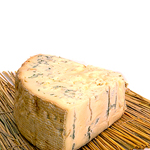 |
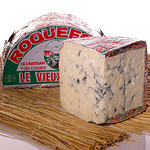 |
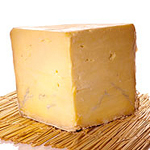 |
| Italian Gorgonzola: 879 C.E. |
French Roquefort: 1070 C.E. |
English Cheddar: 1500 C.E. |
 |
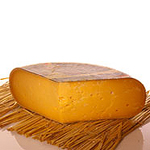 |
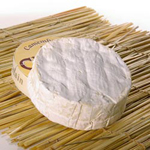 |
| Italian Parmesan: 1579 C.E. |
Dutch Gouda: 1697 C.E. |
French Camembert:1791 C.E. |
Photos courtesyMurraysCheese.com.
Continue To Page 4: The Middle Ages To Today
Go To The Article Index Above

|




 Emmental, the best-known Swiss cheese, was developed by the Helvetians in the first century B.C.E.
Emmental, the best-known Swiss cheese, was developed by the Helvetians in the first century B.C.E. 
